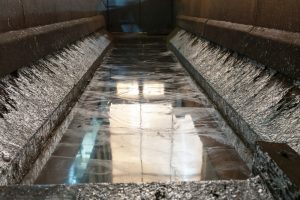
When it comes to constructing, assembling or maintaining artefacts such as furniture, buildings, vehicles or infrastructure, fastening systems play a crucial role, holding the different parts together and ensuring stability, functionality and durability over time. However, very often we focus on the functionality of the fastener and underestimate the importance of the fastener coating, a feature that can have a significant impact on performance and resistance to weathering, corrosion and many other environmental influences.
The function of fastening systems
Fastening systems are designed to perform a variety of functions, including:
Holding parts together: they hold two or more components together, even of different materials, so that they do not separate.
Load distribution: fasteners distribute the load over a large area, thus reducing the risk of damaging surfaces or causing structural damage.
Aesthetics: in some sectors, such as the automotive industry, furniture or construction, fastening systems must also fulfil an aesthetic function and not affect the design or overall appearance of the finished product.
In many cases, fasteners are exposed to environmental conditions that can cause wear and corrosion, such as moisture, weather, chemicals or salt air. In all these cases, a suitable coating becomes essential to protect them and preserve their aesthetics, mechanical characteristics and functionality.
The importance of selecting the right coating
There are different types of treatments available for fastening systems, each applied to meet specific needs.
● ZINC COATING
Zinc coating is widely used to protect steel fasteners from corrosion by aggressive agents even in highly oxidising environments.
There are different types of zinc plating, and the corrosion resistance of the galvanised element increases depending on the application process of the coating, the thickness of the zinc applied and the roughness of the coated element.
● CHROMIUM COATING
Chrome coating ennobles the surface, making it less vulnerable to attack by corrosive agents even in aggressive environments.
The oxidation of the chromium metal generates surface passivation, i.e. the formation of chromium oxide that accentuates the protection of the coated metal.
● NICKEL COATING
Nickel coating, which can be carried out chemically or electrolytically, changes the surface characteristics of the treated material, giving hardness and resistance to corrosion.
The nickel plating process is mandatory if chromium plating is to be carried out r and is performed on steel or brass elements but also on plastic components such as ABS already treated with a copper coating.
● ANODISING: SURFACE ANODISING
This is a surface treatment that is carried out mainly on aluminium alloys but also on titanium and other metals that lend themselves to surface oxidation, i.e. hardening.
This treatment creates a protective oxide layer that gives the material a high resistance to corrosion and aggressive external agents.
There are many types of anodising that also generate aesthetically coloured surfaces.
Corrosion resistance, again, is directly proportional to the thickness of the oxide generated, the surface roughness of the coated element and varies depending on the anodising process chosen.
● ELECTROPOLISHING AND PASSIVATION
The electropolishing surface treatment has the objective of lowering the surface roughness of the treated element so that water molecules or aggressive agents cannot penetrate into the porous cavities of the material.
This electrochemical process acts by removal, also eliminating surface imperfections.
With subsequent passivation treatment, the treated stainless steel element acquires high resistance to surface corrosion and pitting corrosion.
● BURNISHING – NERINOX
The burnishing treatment, which in stainless steels is called NERINOX, is a surface treatment that confers greater resistance to surface pitting corrosion and gives the treated element a black, homogeneous, and intense colouring that can be either glossy or matt depending on the finish of the treated surface.
This treatment is widely used both for aesthetic purposes and to make an element anti-reflective to light for military purposes.
● PHOSPHATING
This is a chemical treatment that creates phosphate crystals on the surface of the treated carbon steel element.
These crystals improve the corrosion resistance characteristics of the steel and lower the coefficient of friction, facilitating sliding between two fasteners.
Phosphating can be zinc or manganese.
The importance of selecting the right coating
Selecting the right coating for fastening systems is crucial to ensure the durability and performance of the project. Using the wrong coating or no coating at all can lead to a number of problems, including:
● Corrosion, which can weaken the fasteners, making the project less secure and less durable over time.
● Breakage, which can be premature or sudden, and also cause damage or accidents to people.
● Aesthetic degradation, which may compromise the overall appearance of the product.
● Additional costs, as damaged or corroded fasteners can lead to significant additional costs.
Selecting the right coating for fasteners is a key aspect of the design and construction of any project. An effective coating can improve the corrosion resistance, durability and aesthetic appearance of the finished product. Therefore, it is essential to carefully consider environmental conditions and project-specific requirements when choosing the type of coating to use.
If you have any doubts about the best coating for your project, please contact our qualified sales engineers.




